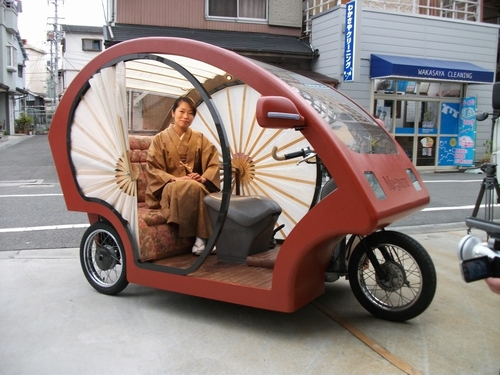
Copyright Yodogawa Co.
Four small Japanese factories in the Kansai region, including Yodogawa Co., a metal processor based in Moriguchi City, have developed a three-seat, three-wheeled electric vehicle (EV) dubbed Meguru. The group unveiled the EV to the media on April 5, 2010. The development of the new EV aimed to restore and revitalize the indigenous industries of Moriguchi City, which used to thrive as a manufacturing town.
The Meguru is powered by a cassette-type lithium battery that can be recharged from a household outlet. The battery can be fully charged with a quick charger in about an hour. The new EV is able to travel about 40 kilometers at a maximum speed of 40 kilometers per hour when fully charged. It uses light-emitting-diodes (LEDs) for its interior lamps and when lit up in the darkness, resembles a traditional Japanese lamp covered in handmade paper. The name "Meguru" is derived from one of the two kanji characters that mean "the environment" in Japanese.
Its body, inspired by a traditional Japanese oxcart, is coated with the red lacquer traditionally used for the gates to shrines, after being covered with vortex-patterned Japanese paper, which represents a recycling-oriented society. Its doors, which are also made of Japanese paper, look like coarse-oilpaper umbrellas and open and shut like folding fans. In addition, the car interior uses traditional Japanese designs, including a Japanese-paper covered ceiling, a bamboo floor, and a rattan-covered steering wheel.
The factories aim to manufacture automobiles for local use as sightseeing taxis or for transportation of the elderly, and are considering mass production of EVs for general sales in the future.












































































No comments:
Post a Comment